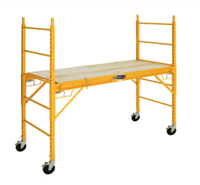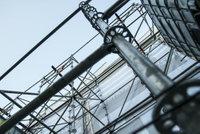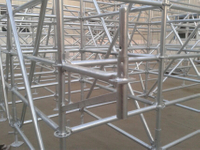Content Menu
● Introduction to Scaffolding Tubes
● Types of Scaffolding Tubes
● Best Practices for Maintaining Scaffolding Tubes
>> 1. Regular Inspections
>> 2. Cleaning and Debris Removal
>> 3. Proper Storage
>> 4. Component Replacement
>> 5. Training and Safety Culture
● Recommended Maintenance Schedule
● Factors Influencing Scaffolding Tube Lifespan
● Expected Lifespan of Scaffolding Tubes
● Advanced Maintenance Techniques
>> 1. Corrosion Protection
>> 2. Galvanization
>> 3. Regular Lubrication
● Safety Regulations and Compliance
● Key Safety Considerations
● Training for Scaffolding Maintenance
● Conclusion
● FAQ
>> 1. What is the recommended frequency for inspecting scaffolding tubes?
>> 2. How often should scaffolding tubes be cleaned?
>> 3. What factors affect the lifespan of scaffolding tubes?
>> 4. How should scaffolding tubes be stored when not in use?
>> 5. What is the average lifespan of steel scaffolding tubes with proper maintenance?
● Citations:
Maintaining scaffolding tubes is crucial for ensuring the safety and durability of scaffolding systems. Proper maintenance not only extends the lifespan of the equipment but also prevents accidents and ensures compliance with safety regulations. In this article, we will explore the best practices for maintaining scaffolding tubes, including regular inspections, cleaning, storage, and component replacement.
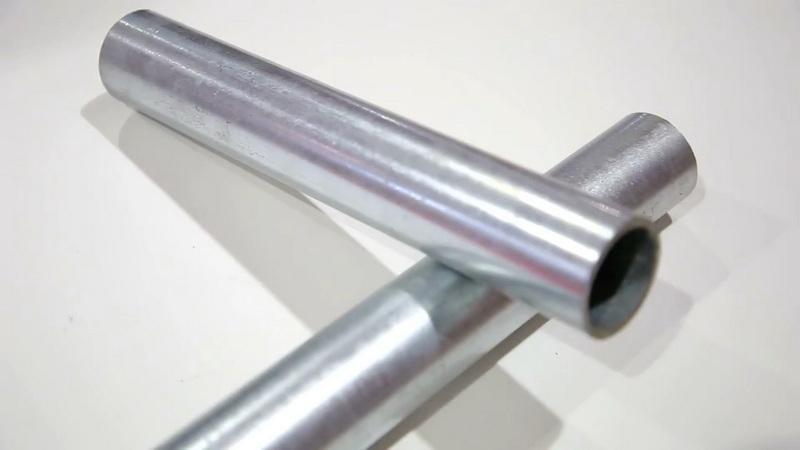
Introduction to Scaffolding Tubes
Scaffolding tubes are a fundamental component of scaffolding systems, providing the structural framework necessary for workers to access elevated areas safely. These tubes are typically made from steel or aluminum and are designed to withstand various environmental conditions. However, their durability depends significantly on how well they are maintained.
Types of Scaffolding Tubes
There are several types of scaffolding tubes, including:
- Steel Scaffolding Tubes: Known for their strength and durability, steel tubes are commonly used in construction projects. They can withstand heavy loads and harsh weather conditions but require regular maintenance to prevent rust and corrosion.
- Aluminum Scaffolding Tubes: Lightweight and resistant to corrosion, aluminum tubes are ideal for projects where mobility and ease of assembly are crucial. They are less prone to rust but still require regular inspections to ensure structural integrity.
Best Practices for Maintaining Scaffolding Tubes
1. Regular Inspections
Regular inspections are the cornerstone of scaffolding maintenance. These inspections help identify any signs of wear, damage, or structural weaknesses before they become hazardous.
- Visual Inspection: Conduct a visual inspection before each use to check for any visible damage, rust, or corrosion. This includes examining the tubes for dents, bends, or cracks.
- Full Inspection: Perform a comprehensive inspection monthly. This involves checking all components, including frames, braces, connections, and planks, to ensure they are secure and in good condition.
2. Cleaning and Debris Removal
Keeping scaffolding tubes clean is essential for preventing corrosion and ensuring structural integrity. Regularly remove any debris, dirt, or substances that may compromise the tubes.
3. Proper Storage
When not in use, store scaffolding tubes in a dry, secure location to protect them from harsh weather conditions and corrosive elements.
4. Component Replacement
Promptly replace any damaged or worn-out components. This includes inspecting and addressing loose connections, cracks, rust, or missing parts.
5. Training and Safety Culture
Ensure that workers using the scaffolding are properly trained on its safe usage, maintenance, and inspection procedures. Encourage a culture of safety and accountability among all employees.
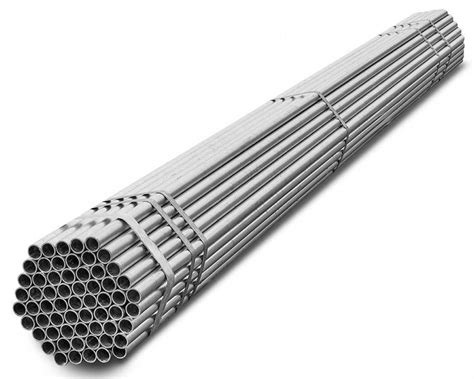
Recommended Maintenance Schedule
Developing a maintenance schedule helps ensure that necessary tasks are performed regularly. Here is a sample schedule:
| Type of Maintenance | Frequency |
| Visual Inspection | Before each use |
| Full Inspection | Monthly |
| Component Replacement | As needed |
| Cleaning | Regularly |
Factors Influencing Scaffolding Tube Lifespan
The lifespan of scaffolding tubes is influenced by several factors:
- Material Quality: High-quality materials, such as steel or aluminum, contribute to a longer lifespan.
- Maintenance Practices: Regular maintenance significantly extends the life of scaffolding tubes.
- Frequency of Use: More frequent use, especially in harsh environments, accelerates wear and tear.
- Environmental Conditions: Exposure to extreme weather conditions can accelerate deterioration.
Expected Lifespan of Scaffolding Tubes
With proper maintenance, steel scaffolding tubes can last between 15 to 20 years, while aluminum tubes may have a similar or longer lifespan due to their resistance to corrosion.
Advanced Maintenance Techniques
1. Corrosion Protection
Applying protective coatings or treatments can enhance the resistance of steel scaffolding tubes to corrosion. This is particularly beneficial for tubes exposed to marine or high-humidity environments.
2. Galvanization
Galvanizing steel scaffolding tubes provides an additional layer of protection against rust and corrosion. This process involves coating the tubes with a layer of zinc, which acts as a barrier against corrosive elements.
3. Regular Lubrication
Ensure that moving parts and connections are regularly lubricated to prevent friction and wear. This helps maintain the smooth operation of scaffolding components.
Safety Regulations and Compliance
Compliance with safety regulations is critical when maintaining scaffolding tubes. Familiarize yourself with local and national standards, such as OSHA guidelines in the United States, to ensure that your scaffolding meets all safety requirements.
Key Safety Considerations
- Load Capacity: Ensure that the scaffolding is not overloaded beyond its rated capacity.
- Stability: Verify that the scaffolding is stable and securely anchored to prevent collapse.
- Access: Ensure safe access to and from the scaffolding platform.
Training for Scaffolding Maintenance
Providing comprehensive training to maintenance personnel is essential for ensuring that scaffolding tubes are properly maintained. This training should cover:
- Inspection Techniques: Teach how to identify signs of wear or damage.
- Maintenance Procedures: Cover cleaning, storage, and component replacement techniques.
- Safety Protocols: Emphasize the importance of safety during maintenance operations.
Conclusion
Maintaining scaffolding tubes is essential for ensuring safety, durability, and compliance with safety regulations. By implementing regular inspections, cleaning, proper storage, and component replacement, you can extend the lifespan of your scaffolding equipment and create a secure working environment.
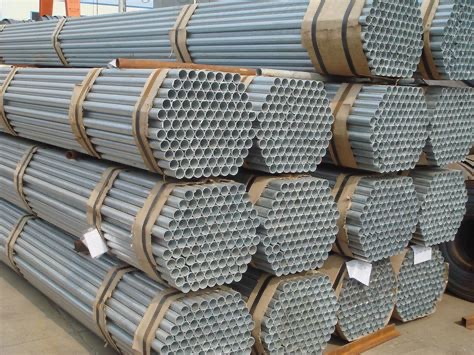
FAQ
1. What is the recommended frequency for inspecting scaffolding tubes?
Scaffolding tubes should be visually inspected before each use and fully inspected monthly. Regular inspections help identify potential issues early, preventing accidents and ensuring compliance with safety standards.
2. How often should scaffolding tubes be cleaned?
Scaffolding tubes should be cleaned regularly to prevent debris accumulation and corrosion. The frequency may vary based on environmental conditions and usage.
3. What factors affect the lifespan of scaffolding tubes?
The lifespan of scaffolding tubes is influenced by material quality, maintenance practices, frequency of use, and environmental conditions. High-quality materials and regular maintenance can significantly extend the lifespan.
4. How should scaffolding tubes be stored when not in use?
Scaffolding tubes should be stored in a dry, secure location to protect them from harsh weather conditions and corrosive elements. Proper storage helps maintain the structural integrity of the tubes.
5. What is the average lifespan of steel scaffolding tubes with proper maintenance?
With proper maintenance, steel scaffolding tubes can last between 15 to 20 years under normal conditions.
Citations:
[1] https://scaffoldtype.com/scaffold-inspection-maintenance/
[2] https://www.youtube.com/watch?v=ZM6Tlh_NAnQ
[3] https://blog.csdn.net/weixin_40289064/article/details/79669930
[4] https://primesteeltech.co.in/what-is-the-expected-lifespan-of-the-scaffolding-equipment.html
[5] https://www.shutterstock.com/video/search/scaffolding
[6] https://patents.google.com/patent/CN101680591B/zh
[7] https://scaffoldingrentalandsales.com/blog/how-to-properly-maintain-your-scaffolding-equipment/
[8] https://www.youtube.com/watch?v=ozEIJSMApxE













